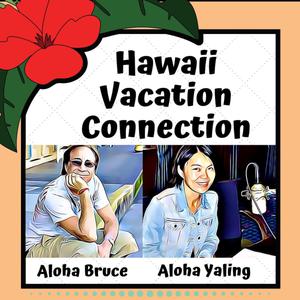Hawaii Travel Hacks: 6 Tips & Advice
As the owners of Hawaii Aloha Travel, my wife Yaling and I, along with our dedicated team, have guided visitors through the complexities of planning Hawaii vacations for over 22 years. Our extensive experience, combined with 18 years of podcasting, makes us your go-to experts for everything in Hawaii. If you're ready to take the plunge, check us out at hawaii-aloha.com or give us a call at 1-800-843-8771 for Hawaii Travel Hacks. You'll be glad you did!
Why Choose Hawaii Aloha Travel?
Unlike some influencers or celebrities who might not know the first thing about booking a Hawaii vacation, we live, breathe, and experience Hawaii every day. Our expertise is constantly updated, and our website is a treasure trove of information—think of it as your very own Hawaii encyclopedia. With our personalized service, you'll avoid the pitfalls of outdated advice and get the most current, relevant insights into what's happening on the islands.
Tip 1: Avoid Overhyped Tourist Traps
While it's tempting to hit all the famous spots, some of them are overrated and overcrowded. For example, Diamond Head is often touted as a must-do hike, but in reality, it’s just a long climb up a bunch of stairs to a view you could easily get from a hotel rooftop. Instead, explore lesser-known trails like the Makiki Heights trails on Oahu, which offer a serene rainforest experience with far fewer crowds, even on weekends. And if you’re up for a challenge, try the Koko Crater stairs, but be warned—it’s a tough climb!
Wasting your time climbing a bunch of statirs is not my idea of a hike!! Pass on this!!
Call us and we'll tell you where there are much better alternatives to Hike and enjoy a rainforrest!
Tip 2: Time Your Activities Right—Do Everything Later
One of the best pieces of advice I can give for enjoying Hawaii is to avoid the early morning rush. Most travelers are jet-lagged when they arrive, waking up at 4 or 5 AM and rushing to start their day. While that might seem like a good idea, it often leads to crowded attractions and long lines. My suggestion? Do everything later.
Take Pearl Harbor, for instance. Most people think they need to be there first thing in the morning. But if you go in the afternoon, you’ll often find it less crowded, and tickets can be easier to come by. The same goes for Hanauma Bay. Typically packed in the morning, the parking lot starts to clear out by early afternoon. You’ll enjoy a more relaxed atmosphere, and you won't feel rushed.
This concept of doing things later can be applied to most activities across all the islands. For instance, instead of starting your day early on the Road to Hana, head out later in the morning. This way, you avoid the convoy of rental cars and can enjoy the drive without the stop-and-go traffic that often builds up early in the day. And when it comes to hikes, places like the Makapu'u Lighthouse Trail or the ridges around Hanauma Bay are much more pleasant to explore in the late afternoon when the sun is lower, and the temperatures are cooler.
Tip 3: Smart Inter-Island Travel
Travel in the morning, find less people and don't rush to check int your hotel!!
Timing also plays a crucial role when it comes to inter-island flights. Many travelers make the mistake of booking midday flights, thinking they'll have time to check into their next hotel as soon as they arrive. But the reality is, midday flights are the busiest. Airports are crowded, check-in lines are long, and you’ll spend a lot of time just waiting around.
Instead, consider flying early in the morning or later in the afternoon. Early morning flights let you get to your next island and dive straight into an activity. You can make the most of your day without being stuck in hotel lobbies, waiting for check-in time. On the other hand, if you’re not a morning person, a late afternoon flight means you can enjoy a full day on your current island before moving on. This way,
17 September 2024, 10:22 pm
